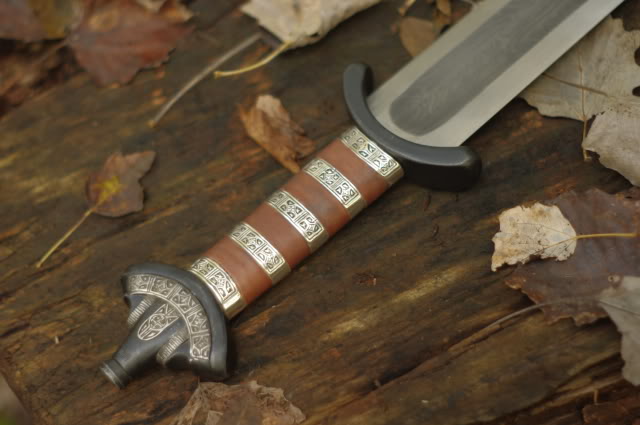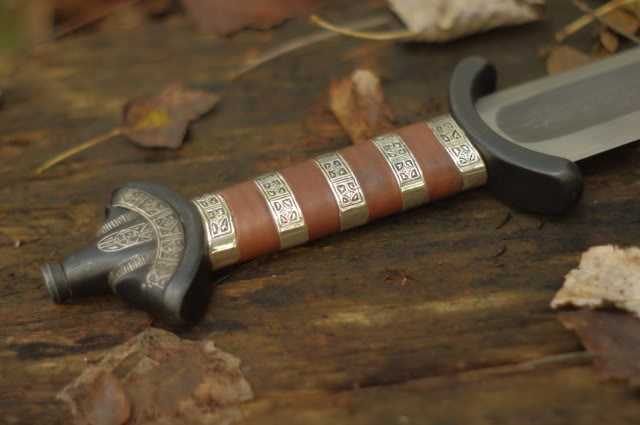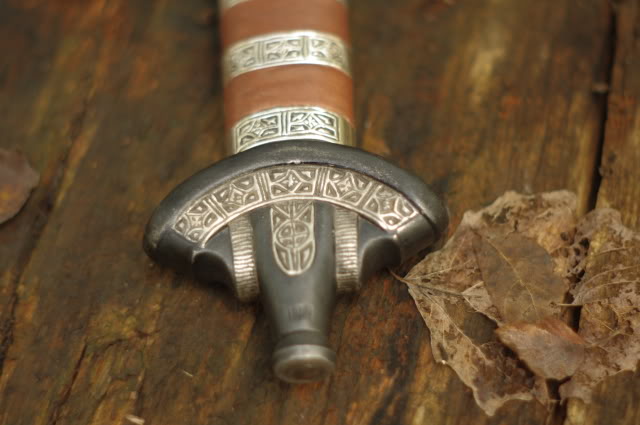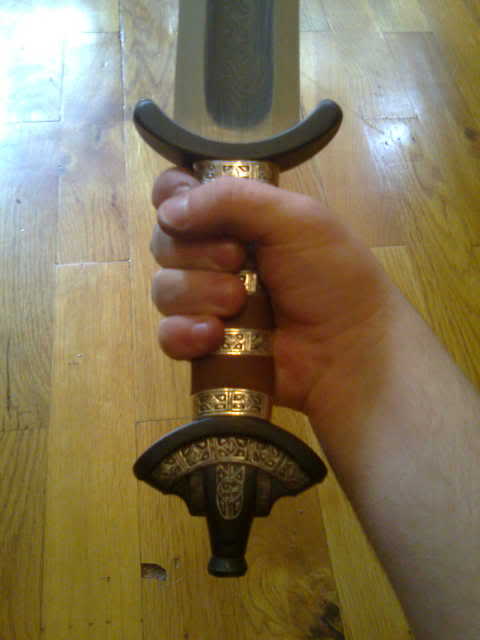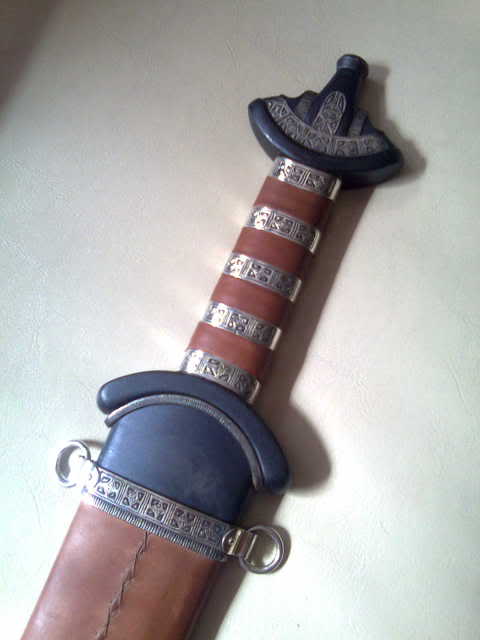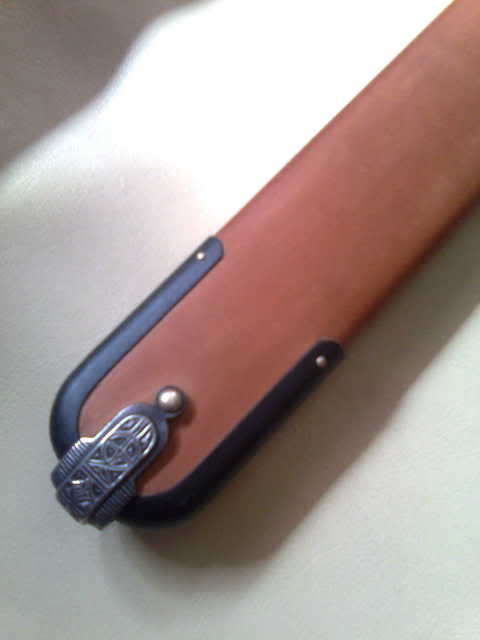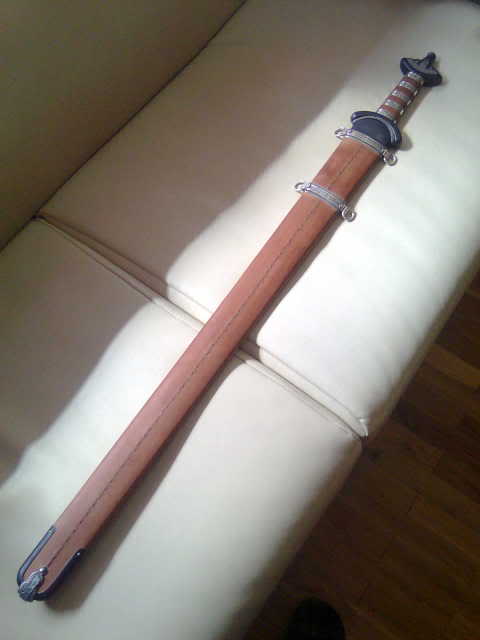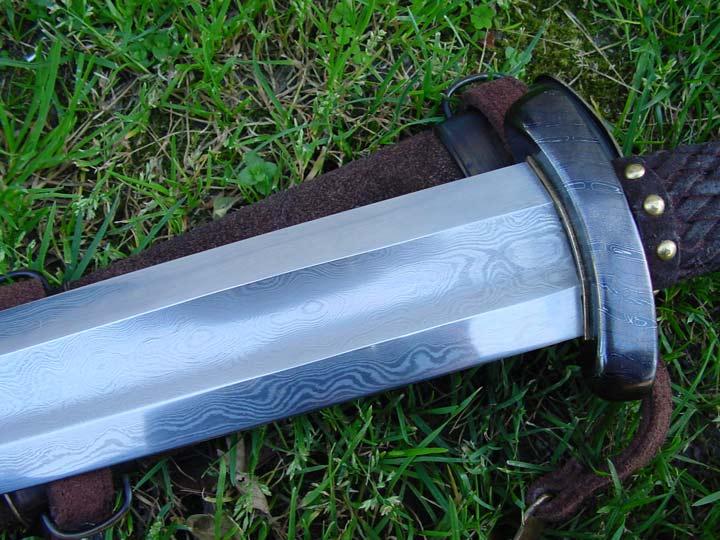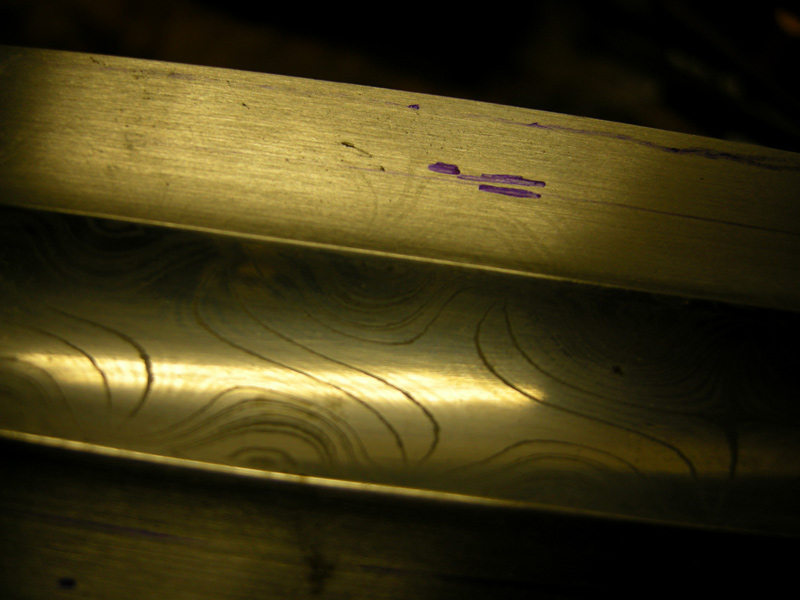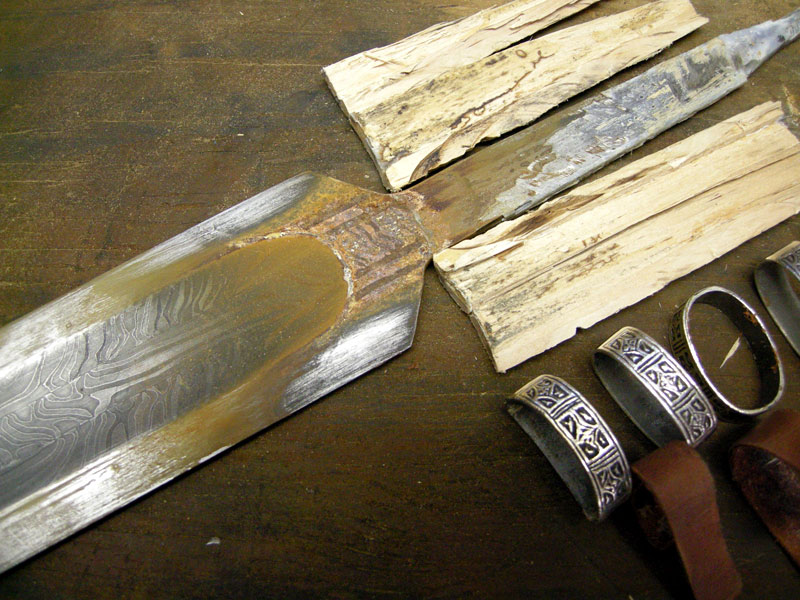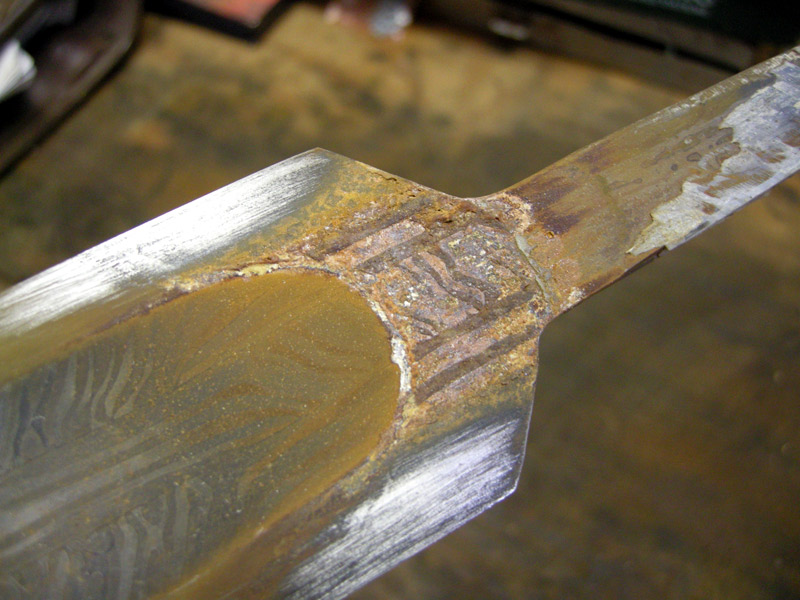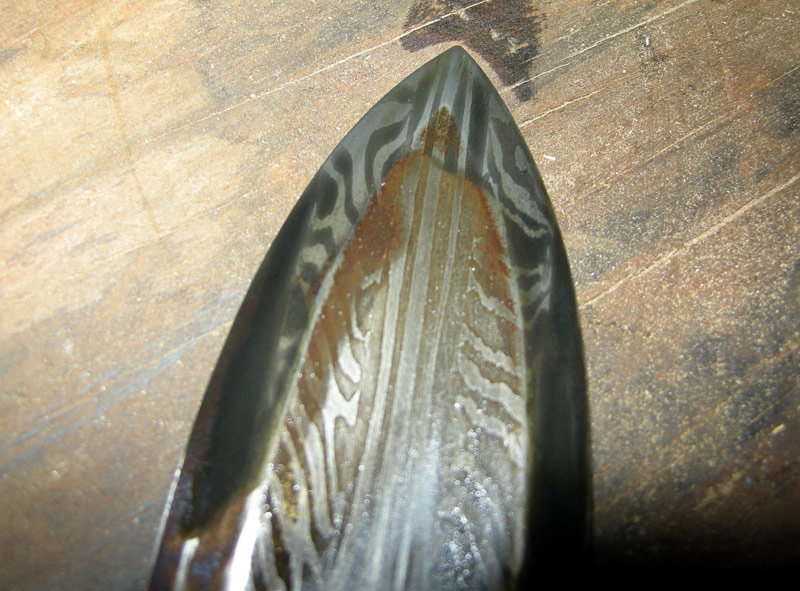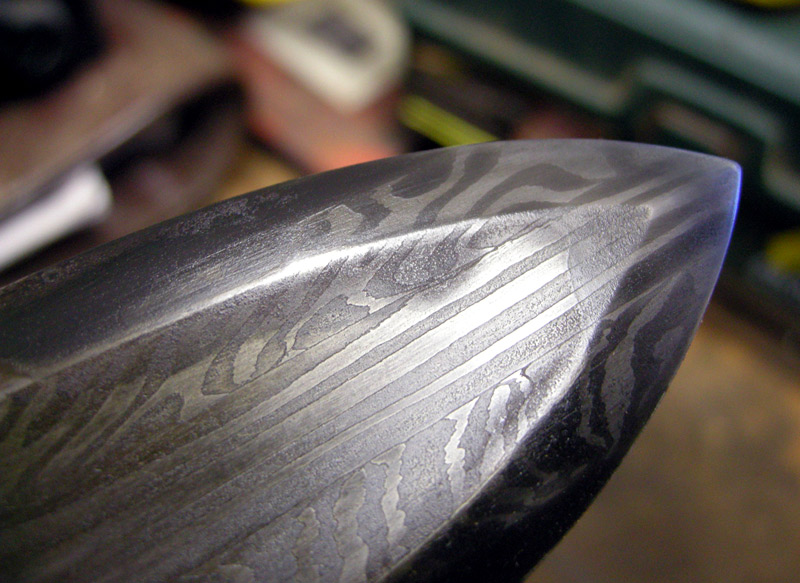When I first saw this sword linked on the SBG (old forum) and realized it might really be pattern welded, I knew I must have it. I'm looking for a pattern welded blade i can afford for a few years now and I have owned Hanwei Godfred but its blade construction and pattern weren't historical and during the cutting it got a long shallow crack near the tip, so I got rid of it and started searching from the beginning. The Saxon ended this search, at least until I have 1000 euros to blow on a sword… ;) This was also my frist time buying a sword online without handling it so I was quite a bit anxious. I went with Kult of Athena because they had the lowest price by far, $310,95, and I didn't regret.
Historical overview:
Hanwei is with this model trying to replicate this sword from the Yorkshire Museum:
http://www.yorkshiremuseum.org.uk/assets/coll...hi-res.jpg
http://www.yorkshiremuseum.org.uk/assets/coll...hi-res.jpg
As you will see the hilt is replicated quite well, although the original's decoration was silver I think and was surely executed much crisper and nicer when new than Hanwei's and the original didn't have iron parts of the hilt blackened like Hanwei did with theirs. Also, I'm not sure, but since the original is 9th century, it probably had two piece pommel and Hanwei of course has upper part and pommel made in one piece. All in all the hilt visually is quite similar to the original but some details are not historically accurate.
The blade of the original is of a design new for 9th century, well tapered and quite pointy, and here the original and Hanwei swords differ the most. I don't know if the original is pattern welded.
Now that differences between the original and Hanwei's sword are dealt with, I will focus on the Hanwei itself. The hilt type is Petersen type L. This type was, because of Trewhiddle style of decoration specific for Anglo Saxons, classified as a native Anglo Saxon type, but since many of the L's are found in Norway, and many without decoration, it might be that it's just a type well accepted by Anglo Saxons in their contact with Vikings so they started to replicate it and decorate it with their own style of decoration. But we can't know for sure. The dating of this variation of the type L is second half of the 9th century and early 10th, while other L variants are more typical for the first half of the 10th century (for example the famous Leuterit sword found in Witham river and replicated by Windlass and Gen2).
The blade of Hanwei Saxon is a Geibig type 1:
http://www.myArmoury.com/view.html?features/pic_geibig05.jpg
It's a blade type made until about 800AD so it is cerainly not a blade that would be made new for the type L hilt, but of course it's quite usual for the viking age sword to have much older blades rehilted with new and fashionable hilt types. So this blade might have been made anytime from 500 to 800AD and rehilted many times before finally getting the type L hilt in the second half of the 9th century with which we might unearth it somewhere in the North.
The package
I never remember to picture the box and packing before the opening so you won't see them. Standard Hanwei box inside a bigger box and padded with a lot thick, brown paper. The box and the sword inside was shipped to Croatia undamaged.
The blade
The blade is, as I already wrote, Geibig type 1, caractheristic for almost parallel edges with very little profile and distal taper. Hanwei blade also has very little distal and profile taper but is thicker and heavier than period blades which were thin and flexible. Geibig 1 blades either have no fuller or a wide shallow fuller. Hanwei blade is the second variation with wide, relatively shallow but well defined fuller. The tip is wide and short, but the tip is pointy at the end. The blade is quite thick and very stiff. In the fuller you can see the pattern welding pattern of the core. It is made of three twisted rods which are probably made of two steels already so there is probably six rods mixed in the core. The pattern is made with parts of rods being twisted or left straight to achieve the contrast between the parallel rods. You can see the weld lines and I believe the core really is pattern welded, but the darker color of one of the materials in the core can relatively easily be removed with a sand paper so I assume the steels used in the core are quite similar or the same so just etching them for a contrast is not enough and Hanwei used some kind of bluing substance to enhance the pattern. It is durable finish enough so that it won't fade away in use unless you let the sword rust so that you will have to use some aggresive abrasives to remove the rust. With that you would probably remove the contrast between the steels in the core and you would probably still see the lines between layers and you would see the blade is pattern welded, but the nice color contast would be lost and I'm not sure what would be the easiest way to return it. I would love to see a smith playing a bit with this blade and hear what he would say about the pattern and the materials of the core and in what ways the contrast between them could be achieved.
The edges are made of 1095 regular steel. I don't know what is the steel of the rods in the core. I sent an email to Hanwei and if get a reply, I will update the review. Blade length is 26 3/4" and overall length 33 7/8” according to Hanwei, but 70cm (27.5”) blade and 86cm (33 7/8”) overall. The thing is that Hanwei measured to the curved end of the guard and I measured to the real base of the blade. The sharpening of the blade varies from very nice almost apple-sead age to slight secondary bevel, but it’s not really sharp anywhere. But it shouldn’t be problem to sharpen it.

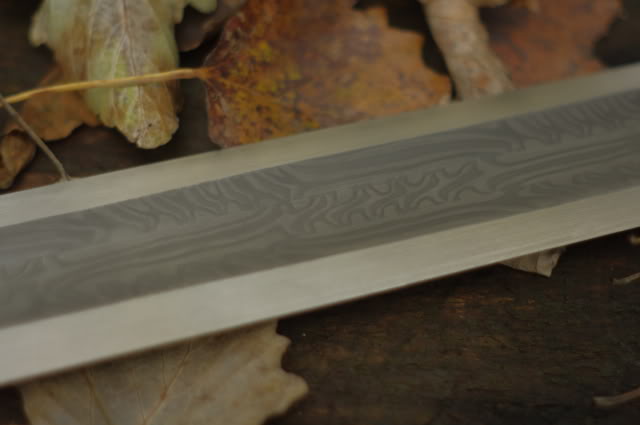

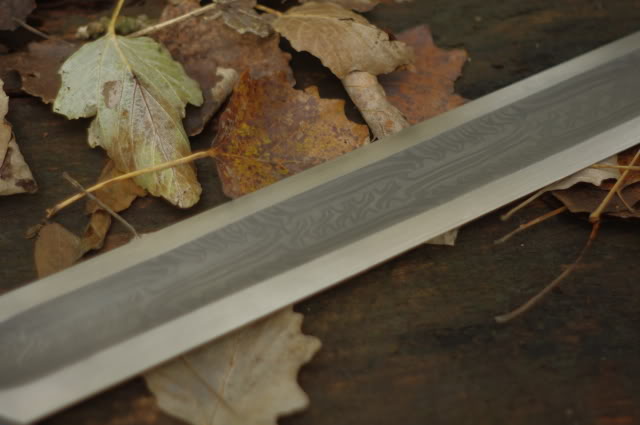
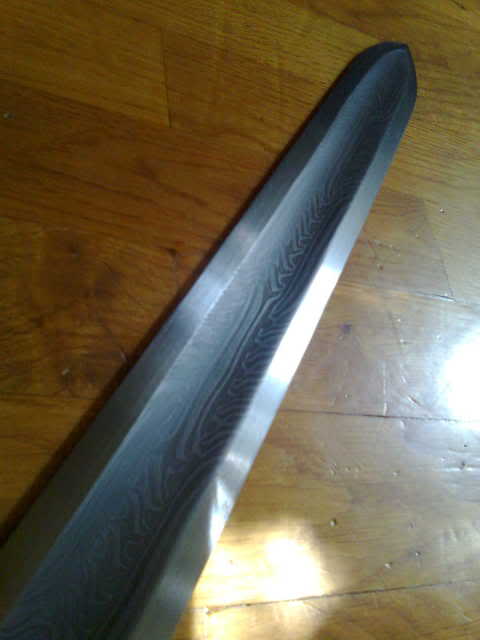
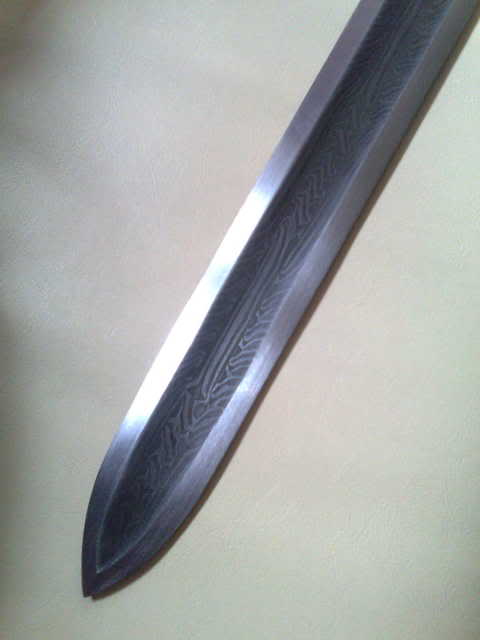
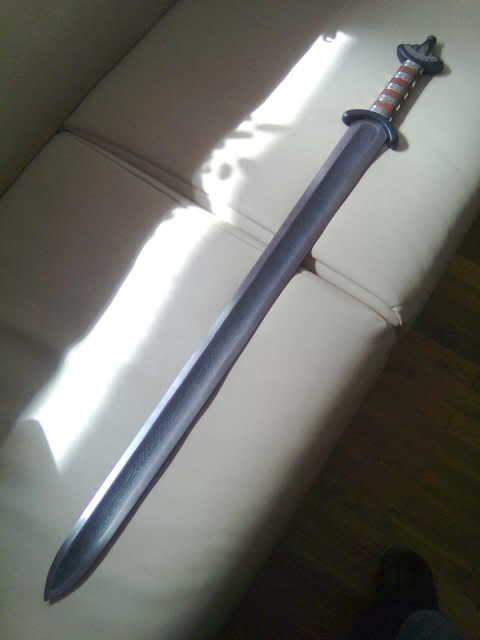
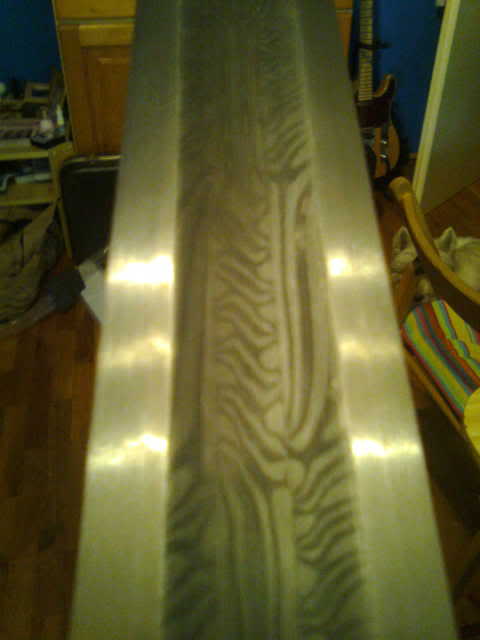
Fittings
The fittings are well shaped and quite accurate in shape to the original, decoration is not bad, but the original would be much more glorious looking, so I would prefer non decorated and well shaped fittings, but that's just me. ;) Black finish on undecorated parts look a lot like a black paint like on their Cromwell backsword and I would prefer naked steel like on the original. Grip is leather with five metal bands and 4“ long. The tang is peened and didn't loosen after the cutting.
Look at this Barta hilt for an example of what decoration should look like. But I don't know why Patrick Barta too used black finish on undecorated hilt parts. When I think about it, Hanwei probably used the black paint because they saw black finish on the Barta sword.
http://www.templ.net/pics-weapons/128-sword/128-hilt-v.jpg
